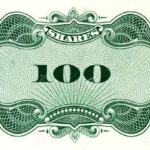As a small business, you have to consider the concept of microeconomics when pricing your product or service to maximize revenue. By definition, microeconomics studies the behavior of individuals and firms in making decisions regarding the allocation of limited resources (i.e., money). Contrast microeconomics with macroeconomics. Macroeconomics considers the sum of all economic activity such as dealing with the issues of growth, inflation, unemployment, and national economic policies. The concept of microeconomics assumes that the buyer is making a rational decision to maximize his value.
The first step in understanding how the buyer will respond to their value proposition is to understand the real cost of delivering a product or service. You understand the real cost of delivering a product or service by establishing an internal break-even value. Specifically, the small business owner needs to ascertain both the direct and indirect costs of delivery. Principle among the indirect costs is the company’s customer acquisition cost.
Business owners need to know the true cost to serve one customer. Many of these costs are unpaid but consume valuable company resources that could be expended elsewhere. Creating PR requires someones time and effort. SEO requires a content strategy, inbound links, relevancy, keyword strategies, etc. Attracting influencers to help promote your offering also takes time and effort.
In addition to unpaid costs, your business will likely have paid marketing costs as well. For instance, social media ads, banner ads, and buying email lists are all examples of paid marketing costs.
Once you understand the unpaid and paid customer acquisition cost, you need to determine the economic benefit to the user. Do you save them time, make them more efficient, or save them money? What is this all worth to the customer? How much of this benefit can you capture from your pricing? Does this price exceed your break-even cost to acquire the customer plus any physical product acquisition/production and delivery costs?
Next, you need to understand your customer’s options. What do they pay for similar products and services today? What alternatives does the customer have and do those options shape what they are willing to spend for your product or service?
Remember, regardless of what you sell, you are competing with your customer’s “share of wallet,” which is not unlimited. What are your customers spending their money on now? How much are they spending? What would they not buy if they bought from you?
Using the concept of “price elasticity of demand”, discussed in a previous post, determine what price will your customers ultimately accept? Would the price cause the client to delay their purchase or choose an alternative solution?
Once you understand the true costs that go into your product or service and understand the customer’s point of view, you can choose the right price to maximize your revenue.
Do you consider microeconomics when you price your product or service?












